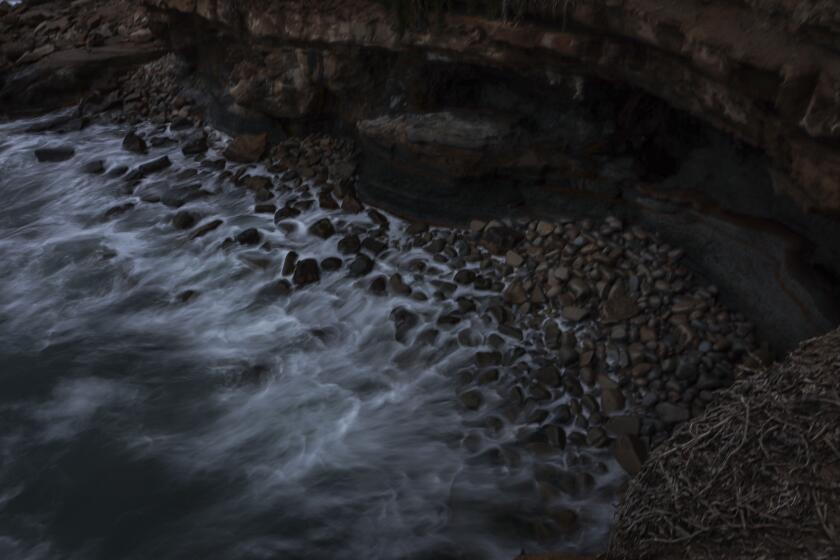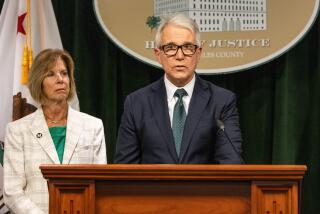Her 12-year-old son took the Metro to buy her a Mother’s Day present. He never returned
- Share via
MEXICO CITY — Last Monday, Brandon Giovanni decided to accompany his stepfather on the Metro to his evening shift in a restaurant downtown. For the seventh-grader, it was a break from the cramped family flat in Colonia Zapotitla, a sprawling neighborhood of unpaved roads and cinder block dwellings in this vast capital’s gritty southeast borough of Tláhuac.
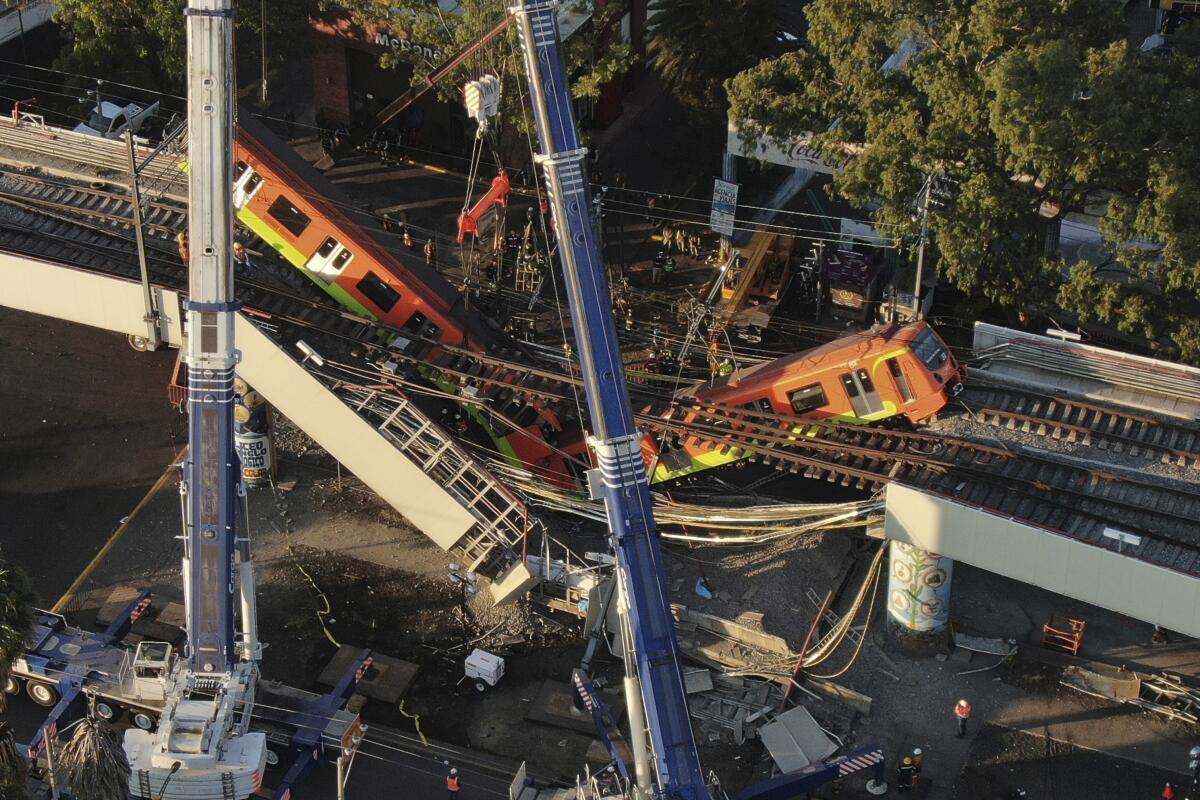
Though he didn’t say so, Marisol Tapia knew that her son had another, secret motivation: He wanted to buy her a gift for Mother’s Day.
“Mamá, we’re headed to the Periférico station,” an animated Brandon Giovanni replied when his mother called on his cellphone about 10:15 p.m., as he and his stepfather were headed back home on the Metro Line 12. “I have a surprise for you!”
Periférico was only three stops from the Nopalera station, where the pair would exit.
“Dinner is ready,” his mother told him. “I’m going to the store quickly to get something to drink.”
Her son responded: “Mamá, buy me some cookies!”
It was the final time she would speak with her boy.
As the train approached the Olivos station, two stops east of Periférico, three metal girders supporting the elevated line gave way, authorities said, plunging the last two cars of the train toward busy Tláhuac Avenue some 15 feet below. The two subway cars separated from the rest of the train and dangled in a horrific, V-shaped tableau as metal and concrete debris from the super-structure plummeted to the bustling boulevard.
At least 26 people — train passengers and at least one motorist who was crushed on the avenue below — were killed and dozens more injured, many of them working-class residents returning home after night jobs. It was the deadliest incident in decades on the Mexico City Metro, which opened in 1969 and now carries more than 4 million passengers daily, second in the Americas only to New York’s subway.
The deadly crash off Point Loma shows how decades of heightened border enforcement and recent pandemic policies drive people to riskier crossings.
The infamously crowded and deteriorating Metro is a vital lifeline here, connecting commuters in a sprawling metropolis that is home to more than 20 million, among the world’s most densely populated.
Brandon Giovanni Hernández Tapia was the youngest of the fatalities. The 12-year-old loved soccer, dreamed of traveling around the world and hoped to become a doctor so he could buy his mother a house to escape the grinding poverty of Colonia Zapotitla. His sobbing grandmother said at the boy’s wake that he liked dancing with her.
As the days pass since the crash, recriminations, anger and demands for public accountability from livid citizens have intensified.
For many here, the disaster on Line 12 was less an accident than a preventable case of mass homicide — not because of suspected sabotage or a terrorist attack, which authorities have discounted as causes.
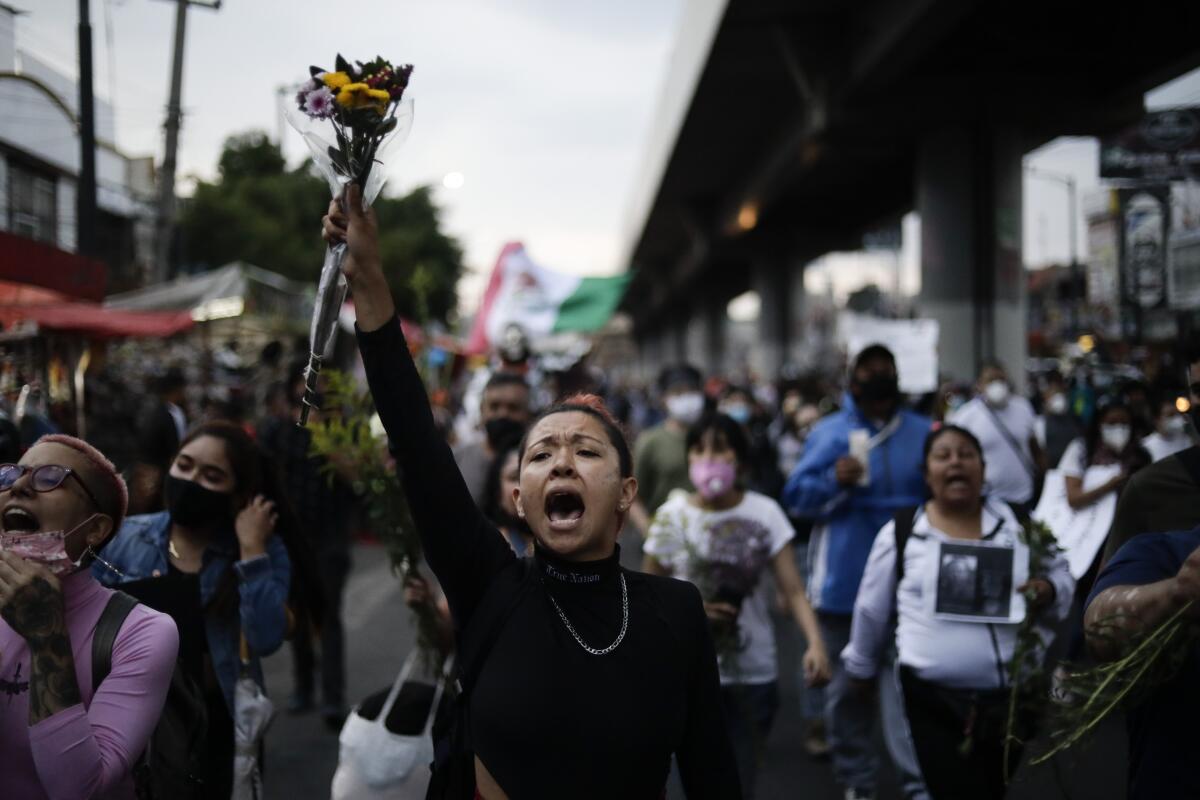
Rather, in a country where corruption has long contributed to slapdash building practices — and has figured in untold numbers of deaths as structures toppled in earthquakes and other disasters — many are convinced that graft and institutional neglect are the true culprits. Monday’s crash was the third fatal incident in a 14-month period for a heavily subsidized system that the Metro’s 2018-2030 Master Plan showed to be in “deterioration” and in “urgent” need of investment and modernization.
“This was not an accident,” declared Tapia, 28, who has two younger sons and, like so many here, lives off the informal economy, as a street vendor hawking holiday trinkets. “This was negligence on the part of the government.”
Behind the acrimony is a checkered history of shoddy construction, cost overruns, faulty maintenance and allegations of corruption that have plagued the so-called Golden Line almost since the $2-billion project was inaugurated in 2012. Metro’s newest addition, it has helped cut commuting times by an hour or more for some of the neediest residents of Mexico City and its far-flung suburbs. But safety concerns have dogged the project.
The city shut down elevated stretches of Line 12 for a 20-month period in 2014 and 2015 for an extensive overhaul. Engineers found a number of hazards, including incompatibility between the line’s metal wheels and its rails. The devastating 2017 earthquake damaged supporting pillars, requiring more repairs.
While accusations of corruption have long swirled, no one ever went to prison for misconduct linked to Line 12.
For the residents of Tláhuac borough, many of whom live day to day on meager earnings but depend on the Metro, it has become an article of faith that Line 12 was a calamity foretold — an avoidable consequence of graft, incompetence and official apathy.
“It was clear from the beginning that the Metro was badly constructed, and we all know that millions [of pesos] were diverted,” said Tapia, in a comment echoed by many residents. “Lately all kinds of problems had been reported and the authorities did nothing.”
The Metro’s embattled general director, Florencia Serranía Soto, has denied reports from residents that elevated portions of Line 12 had been seen “buckling” in recent weeks. Inspections in 2019 and 2020 showed no irregularities, said Serranía, who has rejected demands that she resign.
The city has hired a Norwegian firm to investigate why the metal supports failed, leading to the catastrophe.
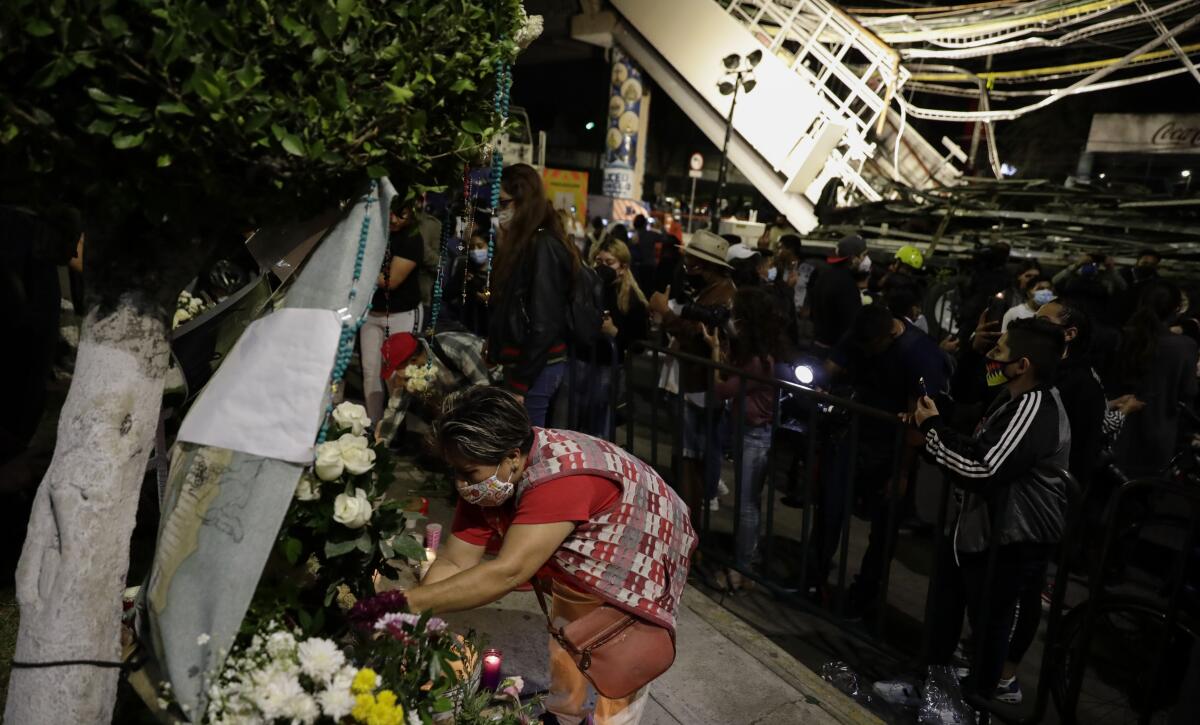
The Metro director has vowed to cooperate with various inquiries, including a homicide investigation by the city prosecutor.
Mexican President Andrés Manuel López Obrador told reporters that “nothing would be hidden” adding: “No lies, no robberies, no betrayal of the people.”
But the left-wing president, who was elected in 2018 on an anti-corruption platform and routinely blames corrupt “conservative” adversaries for the nation’s problems, has refrained from citing irregularities in the construction of Line 12. The line was built under city administration of one of López Obrador’s closest advisors, Marcelo Ebrard, a former Mexico City mayor who now serves as Mexico’s foreign secretary. Ebrard is widely regarded as a front-runner to succeed López Obrador.
The many problems of Line 12 remain a black mark on the record of Ebrard, who initially celebrated the Metro extension as the crowning achievement of his six-year mayoral stint. Ebrard left Mexico after completing his mayoral term in 2012 and lived in France and the United States for a period before resurfacing in 2018 as a key coordinator in López Obrador’s presidential campaign.
Ebrard has repeatedly denied any wrongdoing in the project and has never been charged.
“One who acts with integrity has nothing to fear,” the foreign secretary told reporters, appearing alongside the president at a news conference the morning after the crash.
On the evening of May 3, as she awaited the return of her son and his stepfather on Line 12, Marisol Tapia saw on the news that the train had crashed. She couldn’t reach her loved ones. Panicked, she hastened to the Olivos station.
“At that point,” she recalled, “I realized that they were riding in the cars that had fallen.”
Thus began an agonizing, 20-hour odyssey from the crash scene and back, to hospitals, offices and elsewhere in a desperate search. She discovered her partner badly injured in a hospital at 4:30 a.m., but authorities told her there was no word on Brandon Giovanni, even as dawn broke the next day and official rosters of the casualties began to circulate.
“My son wasn’t on any lists of the injured or dead,” she recalled. “Why did they leave me with the anguish of not knowing anything?”
She was seen on Mexican TV imploring officials to clarify the fate of her son. She was told to file a missing person’s report.
“My son is not lost!” she told an official of the city prosecutor’s office, which was assisting in identifying casualties. “He was in the accident!”
At 7 p.m. on May 4, she received a call from the morgue. Her son had been taken there the previous day. He died at the scene of the crash, she was informed.
She hasn’t told her partner, the boy’s stepfather, about the boy’s passing. He remains hospitalized and in shock with broken bones and other injuries.
“The president promised that Mexico was going to change, that he would be different from the other politicians — and in reality this is false, all politicians are the same, they promise everything during the elections and then something like this happens and they say: ‘It was an accident,’” Tapia said. “I want justice for my family, for all the families. I won’t rest from demanding justice until those responsible are in jail.”
Special correspondent Liliana Nieto del Río contributed to this report.
More to Read
Sign up for Essential California
The most important California stories and recommendations in your inbox every morning.
You may occasionally receive promotional content from the Los Angeles Times.
